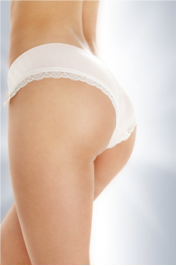What Causes Cellulite?
The two main questions any woman with cellulite always asks are “what causes cellulite?” and “how can I get rid of it?” With as many as 90% of women suffering from cellulite, these questions are constantly discussed and debated. While the cause is easy to ascertain, a solution is a little harder to find. While there doesn’t appear to be any one size fits all solution available, there are numerous ways to reduce the appearance of cellulite. But before you can pick a cellulite solution, you need to address the cause.
What is it?
Simply put, cellulite is bulges and dimples caused by subcutaneous fat stores and trapped fluids and toxins. When these pockets of fat and fluid push and strain against the skin, it causes the tell-tale dimpling every woman dreads. This straining is further complemented by weakened connective tissue, which further accentuates the unsightly cottage cheese texture. But why does the fat push and strain against the skin in the first place?
What causes it?
There are numerous reasons why you have the dreaded orange peel skin, but many people believe cellulite is related to your weight. However, that is not always the case. Contrary to popular belief, cellulite is not specific to women who are overweight. Many slim women, including the celebrities we all love and worship, have cellulite.The only time weight is an indicator of cellulite is when you lose weight very quickly. Extreme weight loss can shock your body and cause it to metabolize fat improperly, causing subcutaneous fat to bulge and decreasing toxin elimination.
There has also been discussion about cellulite being linked to age, although there is no conclusive evidence that aging causes or increases cellulite. That being said, skin does become thinner as you age so any cellulite you have may become more obvious.

Contributing factors
Here are some of the main causes of cellulite:
-
Genetics
Doctors have proposed a genetic component to cellulite. Although the extent of how genetics affects cellulite has not yet been determined, studies suggest that heredity may be partially to blame for your cellulite woes.
-
Hormones
Doctors have also found that hormone levels can exacerbate preexisting cellulite. Increased levels of estrogen, especially following the birth of a child or while taking birth control, contribute to cellulite. Studies are also investigating how other hormones, including insulin and thyroid hormones, impact cellulite.
-
Insufficient Water Consumption
Water consumption plays a key role in flushing toxins from the body. Insufficient water consumption reduces the amount of available water for waste removal. While consuming less water can reduce the amount of fluid trapped beneath the skin, the increase in toxins is not a good tradeoff.
-
Medical Conditions
Certain medical conditions can exacerbate or intensity cellulite. Poor circulation and decreased lymphatic tissue reduce the body’s ability to flush toxins, which can build up beneath the skin and contribute to cellulite.
-
Smoking
The chemicals in cigarette smoke damage connective tissue. When fat pushes against this weakened tissue, the skin bulges outward further, creating unsightly cottage cheese cellulite.
-
Poor Diet
Consuming alcohol and ‘junk food’ can increase the prevalence of cellulite. Alcohol and processed foods contain toxins which can become trapped under the skin. A diet high in fat also increases subcutaneous fat stores, increasing bulging and dimpling.
-
Sedentary Lifestyle
A sedentary lifestyle can decrease circulation, reducing the body’s ability to eliminate trapped toxins. Over time, it can also cause connective tissue to harden and become less flexible, increasing cellulite dimpling.
Now that you know what causes cellulite, you may be wondering how to make it disappear. Unfortunately, there is no one size fits all treatment that addresses all the causes of cellulite. Once you assess which contributing factors affect you, it is easier to choose an appropriate treatment.
Learn more about the different cellulite treatments currently available






